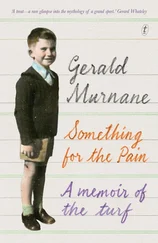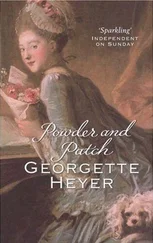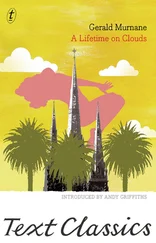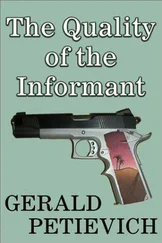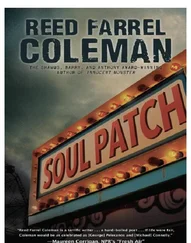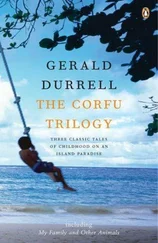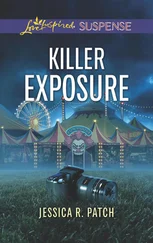Gerald Murnane - Barley Patch
Здесь есть возможность читать онлайн «Gerald Murnane - Barley Patch» весь текст электронной книги совершенно бесплатно (целиком полную версию без сокращений). В некоторых случаях можно слушать аудио, скачать через торрент в формате fb2 и присутствует краткое содержание. Год выпуска: 2011, Издательство: Dalkey Archive Press, Жанр: Современная проза, на английском языке. Описание произведения, (предисловие) а так же отзывы посетителей доступны на портале библиотеки ЛибКат.
- Название:Barley Patch
- Автор:
- Издательство:Dalkey Archive Press
- Жанр:
- Год:2011
- ISBN:нет данных
- Рейтинг книги:5 / 5. Голосов: 1
-
Избранное:Добавить в избранное
- Отзывы:
-
Ваша оценка:
- 100
- 1
- 2
- 3
- 4
- 5
Barley Patch: краткое содержание, описание и аннотация
Предлагаем к чтению аннотацию, описание, краткое содержание или предисловие (зависит от того, что написал сам автор книги «Barley Patch»). Если вы не нашли необходимую информацию о книге — напишите в комментариях, мы постараемся отыскать её.
Barley Patch — читать онлайн бесплатно полную книгу (весь текст) целиком
Ниже представлен текст книги, разбитый по страницам. Система сохранения места последней прочитанной страницы, позволяет с удобством читать онлайн бесплатно книгу «Barley Patch», без необходимости каждый раз заново искать на чём Вы остановились. Поставьте закладку, и сможете в любой момент перейти на страницу, на которой закончили чтение.
Интервал:
Закладка:
Mandrake had two constant companions: Lothar, his giant Nubian servant, and Princess Narda, a young brunette woman who might have attracted me if I could have learned something about her character. In one of their adventures, Mandrake, Lothar, and Princess Narda went for a holiday to a dude ranch in a desert landscape. (This is no proof that the comic-strip itself came from the USA. I learned many years later that some of the comics I had once assumed to be American were devised by men who toiled all their lives in Sydney or Melbourne.) Late on their first evening at the ranch, when all three were preparing for bed in their separate rooms, Princess Narda, who had not drawn the curtains across her window, saw outside the window a giant human hand poised as though about to thrust through the glass and to grope towards her. Princess Narda screamed and then fainted away. Mandrake and Lothar hurried into her room, but by then the hand was no longer in view, and when Princess Narda had been revived and had told her story, the men were inclined to believe that she had imagined the giant hand. (Later, Mandrake himself found a giant footprint and had glimpses of parts of a threatening giant. Some villains had made the parts out of papier-mâché in order to frighten visitors away from the ranch. The villains wanted to buy the property cheaply and then to profit from the oil that they believed was under the property.) Even as a young child, I saw through, as it were, most of the adventures of Mandrake the Magician; I was almost always aware of the presence behind the line-drawings and the speech-balloons of a person who lived in some or another part of what I called the real world and who struggled continually to imagine. And yet, I got from certain images in comic-strips what I got from certain pieces of fiction in publications such as The Australian Journal : details worthy to be included in the scenery that I needed to have always at the back of my mind and outlines of persons worthy to live among that scenery. For example, I watched unfolding in my mind often as a child the following events. A huge, awkward male person, quite unlike myself to look at but of a disposition not unlike my own, finds himself one evening outside a lighted room in which a good-looking dark-haired young woman is undressing for bed. He had first caught sight of the young woman from some distance away, but when he stands beside the window he is so tall and so clumsy that he can only stoop and fumble with a hand at the lighted panes. His only means of getting past the window is to smash the glass with his knuckles. This he does so easily that the shards of glass bring hardly a trace of blood to his pudgy fingers. He is unable to see into the room, but he trusts his fingertips to be able to distinguish between furniture and fabrics and human flesh. Shortly, his fingers close around the limp female body on the floor of the room. But then he pauses. He had been going to lift the woman out; to hold her up to his face; to admire her miniscule features; to look beneath her clothing. But now, he pauses, perhaps out of pity for the doll-sized creature who lies at his mercy but more, perhaps, because the unfolding of my mind has come to an end. I have lost sight of events. I am in need of a faculty such as I have never possessed.
On the verandah of my aunt’s house, I looked into each of the two upper rooms of the doll’s house and then eased the house back to its former position. Then I climbed back into my bed, feeling foolish. I had expected that my looking into the house might reveal to me some sort of secret that my girl-cousins had been keeping from me — perhaps on some bed in an upper room lay a tiny doll with only a thin nightdress covering her female parts. In the event, I had seen in the upper rooms only neat furniture. No doll that my cousins owned was small enough or dainty enough to belong in the house. It was not only I who had no right to poke my fingers through the windows; I began to think of my cousins as hardly worthy to own the house, which I had stopped thinking of as a mere residence for dolls.
Three or four years after my visit to the house in the clearing in the Heytesbury Forest, I read a comic-book about a character named Doll-man. Some or another unremarkable citizen of a vaguely American city was able, when the need arose, to compress the molecules of his body and to become a doll-sized man. On the night when I had looked into the doll’s house, I fell asleep as though my own molecules had been somehow compressed so that I was able to lie comfortably in my chosen bed in an upper-storey room overlooking a clearing in the Heytesbury Forest and to hear already in my mind the shrieks of the giant female personages who would look in on me next morning through the windows.
I reported at the end of the fifth paragraph before the previous paragraph that I was often afraid of the character known as Aunt Bee in the work of fiction Brat Farrar. I reported even earlier that I sometimes resented the influence that Aunt Bee was allowed to exert over one at least of the other characters in the work. While I was reporting those matters, I seemed to recall from more than fifty years ago my having once or twice doubted whether the one character in a work of fiction should be allowed to possess so many qualities deemed admirable by the narrator as Aunt Bee was allowed to possess in Brat Farrar . Of course, terms such as narrator and even character were unknown to me at the time. I simply observed what happened in my mind while I read. And although I was afraid of Aunt Bee, I must sometimes have been aware that the cause of her appearing as she did in my mind was no more than that a personage known to me only as Josephine Tey had chosen that she, Aunt Bee, should appear thus.
I would like to be able to report here that I supposed at least once during my reading that Josephine Tey, whoever she might have been, ought to have written differently about Aunt Bee. I suspect that I had already accepted, more than fifty years ago, that no writer could be required to deal fairly with his or her characters, let alone readers.
When Aunt Bee was first mentioned in the text of Brat Farrar , she was probably the subject of a long passage of description. Any such passage would have been wasted on me, as all so-called descriptions of so-called characters in works of fiction have been wasted on me since I first began to read such works. For how many years did I read dutifully what I thought of as descriptive passages? How often did I try to feel grateful to the authors who included such passages in their works, thereby enabling me to see vividly while I read what they, the authors, had imagined while they wrote? I can recall my having discovered as early as in 1952, while I was reading Little Women , by Louisa M. Alcott, that the female characters-in-my-mind, so to call them, were wholly different in appearance from the characters-in-the-text, so to call them. I was too young at the time to know that this was not the result of my being an unskilled reader. Many years passed before I began to understand that looking at line after line of text is only a small part of reading; that I might need to write about a text before I could say that I had fully read it; that even while I write this present piece of fiction I am trying to read a certain text. (With writing, the matter seems to have been otherwise. Already, as a very young man, I understood that I might be capable of writing fiction without having first observed numerous interesting places and persons and events and even without being able to imagine settings and characters and plots, but not until the day when I stopped writing did I understand what I had been doing all the while when I had thought I was merely writing.)
I would have read attentively whatever Josephine Tey had written in the early pages of Brat Farrar in order to suggest to the reader the appearance of Aunt Bee. Perhaps some or another sentence might have caused me to see in my mind the image of Aunt Bee that has stayed there ever since, but I suspect not. Josephine Tey may have written at length about her character’s distinctive clothes or her admirable personality, but I suspect that some connotation that I have long since forgotten caused me first to see Aunt Bee in my mind as I have seen her ever since. My image of Aunt Bee has comprised never more than two details. She, so to call her, consists of a florid face and a hairstyle that might be called upswept. I am vaguely aware of a clothed body somewhere beneath the hairstyle and the face, but I have never seen that body in my mind. The florid face is hardly different from the florid face that I recall whenever I recall the woman known to me only as Sister Mary Gonzaga, who was the principal of the first primary school that I attended. I was not afraid of Sister Gonzaga as some persons claim to have been afraid during their childhood of nuns wearing long black robes. Sister Gonzaga’s robes and her florid face seemed to me appropriate distinctions for a person who taught forty and more eighth-grade girls.
Читать дальшеИнтервал:
Закладка:
Похожие книги на «Barley Patch»
Представляем Вашему вниманию похожие книги на «Barley Patch» списком для выбора. Мы отобрали схожую по названию и смыслу литературу в надежде предоставить читателям больше вариантов отыскать новые, интересные, ещё непрочитанные произведения.
Обсуждение, отзывы о книге «Barley Patch» и просто собственные мнения читателей. Оставьте ваши комментарии, напишите, что Вы думаете о произведении, его смысле или главных героях. Укажите что конкретно понравилось, а что нет, и почему Вы так считаете.


